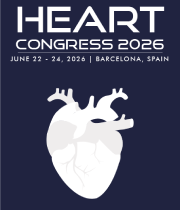Title : Clinical status and experimental research progress in pathological myocardial hypertrophy
Abstract:
Pathological Cardiac hypertrophy is a myocardial lesion caused by various etiologies, leading to organic changes in the heart, including abnormal myocardial contraction and electrocardiographic dysfunction. Pathologically, it manifests as inappropriate ventricular dilation or hypertrophy, thereby impairing cardiac systolic and diastolic functions and ultimately resulting in severe heart failure and death. Incidence rate of dilated cardiomyopathy is 13-84 per 100,000 in China, while that of hypertrophic cardiomyopathy is 180 per 100,000, showing an increasing trend year by year. In Western countries, the incidence rate of cardiomyopathy is 200-500 per 100,000. It is evident that cardiomyopathy poses a significant threat to human health, imposing a heavy burden on society and family finances. Currently, the pathogenesis of cardiomyopathy remains unclear. Therefore, accelerating in-depth research in this area is imperative and crucial for the treatment and prevention of cardiomyopathy.
Myocardial hypertrophy is a critical risk factor underlying cardiovascular diseases. Myocardial hypertrophy mainly manifests magnification of cardiomyocyte volume rather than number increasing in the postnatal heart. Hypertrophic growth of cardiomyocytes requires a large amount of protein synthesis to meet its requestment of cardiomyocyte growth. While transcription factor-BRF1 and its taget genes (tRNAs and 5S rRNA ) play decisional role in protein synthesis. We have perfored the experimental research of animal by drug (ISO) and surgical (TAC) methodes. Animal models and cell experiments have shown that myocardial hypertrophy stimulates a significant increase in BRF1 expression and transcription of tRNAs and 5S rRNA. Interestingly elevated levels of BRF1 are found in the myocardium tissues of patients with myocardial hypertrophy. These studies show that cardiomyo hypertrophy is accompanied by increased expression of BRF1. It implies that repressing BRF1 expression and its target gene transcrition may inhibit cardiomyo hyertrophy, which provid a potient approcher for therapy of hypertrophy cardiomyopathy.




